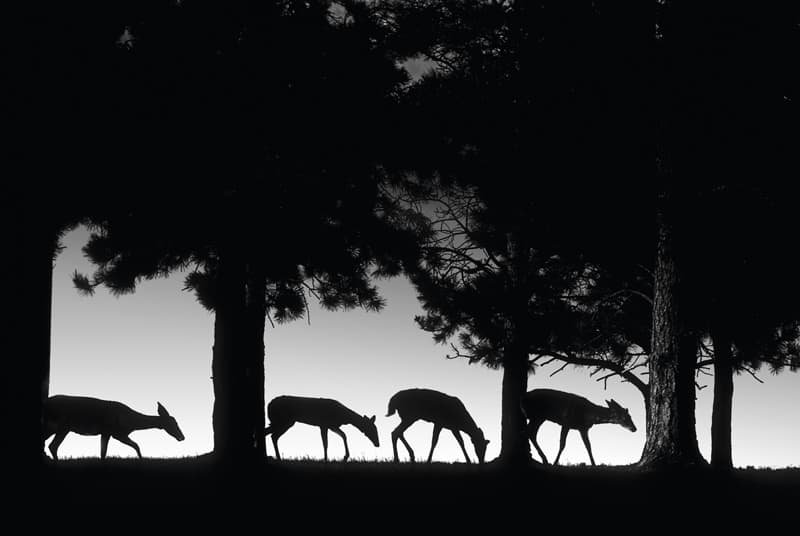Photo Insight with Jim Brandenburg

Jim Brandenburg travelled the world as a photographer with National Geographic magazine for more than 30 years. His work has been published in The New York Times, Life and Time, among others, and he has won numerous awards, including Kodak Wildlife Photographer of the Year by the Natural History Museum and BBC Wildlife Magazine. He is the chair of this year’s competition. Every month Jim will share the story behind one of his nature images
I shot this image while I was working on an assignment about the 500th anniversary of Columbus’s discovery of America. One image from this assignment – a photograph of bison grazing in the Black Hills of North America – was featured as my first Photo insight in AP 7 April (see image below). The image here was also taken in the Black Hills. However, it is very different to the bison image, which is concerned with subtle nuances of colour. The monochrome image you see here in comparison is primarily about its graphic nature.
The time of day is dusk and the light has almost completely faded. Animals are beginning to emerge under the cover of trees to forage for food. This is a group of deer wandering through the undergrowth. The image is about the essential elements of composition and has an appealing graphic quality.
As far as I can remember, this was a serendipitous image. I had finished shooting for the day and looked out of the window while driving my car and saw this scene develop. I pulled over, jumped out of the car and shot everything I wanted within five minutes. I didn’t think too much about it until I saw the developed film afterwards.

When I noticed this scene I saw it in black & white, although when I shot the image I was using Kodachrome colour film. I scanned and converted the image to black & white, but it seemed appropriate on this occasion. I didn’t want any colour in the image, and in any case the original had very little detail in it. I remember the image being all about the sky as there were various shades of blue, but the rest of the scene was very black.
On this occasion I was shooting into what was left of the light, which creates a natural silhouette, but I also underexposed the image via the manual settings. I chose to work manually, as I didn’t want the camera to make all the decisions for me – I wanted to adjust the settings as I wanted them. I may have bracketed a little, but I would have instinctively known what my exposure should be. I wanted to expose only for the gradations in the sky and to let the deer go completely black. I used a 300mm f/2.8 lens with my Nikon camera.
People have singled this image out several times before, which is surprising to me as it isn’t one of my all-time favourites. As a photographer, the images you work on for weeks tend to be the most important in your mind rather than those you casually shoot and walk away from. This was a quick, reactive image that I made when I sensed the composition was coming together in an appealing way.
These days you can choose to shoot black & white in-camera with the flick of a switch or you can convert the image later. I don’t feel there is any difference between the two approaches. Sometimes I instinctively feel that a shot is better suited to black & white. I recently shot a colour image of a lake near my home in Minnesota and then thought that it should really be a black & white image, so I converted it. I worked on newspapers for 15 years so I’m able to think in black & white as well as in colour.

As a photographer, I’m always open to situations. I respond to things as they present themselves. I’m known as a nature photographer, but I’m quite proud of my other work photographing cultures of people around the world. When I’m in France, for example, I’ll go to Paris and play the role of Parisian street photographer.
I’m quite attracted to the idea of black & white nature photography and I would quite like to do an assignment in black & white. I didn’t shoot any black & white images while I was working for National Geographic, and it’s been a long time since I loaded my camera with black & white film! National Geographic assignments were always in colour. Working in black & white is a very elegant and dignified way to pursue photography, and I have very strong feelings for it.
To see more of Jim’s images visit www.jimbrandenburg.com
Jim Brandenburg was talking to Gemma Padley







